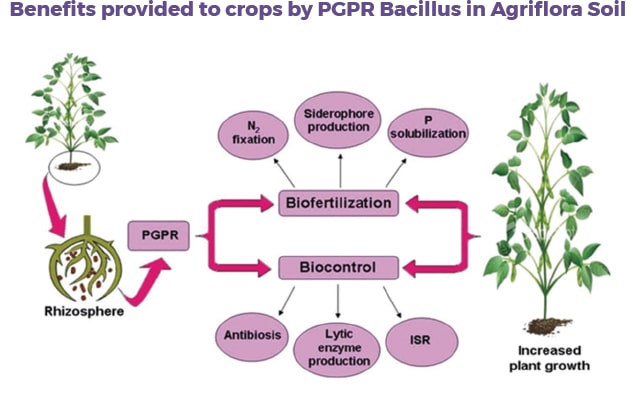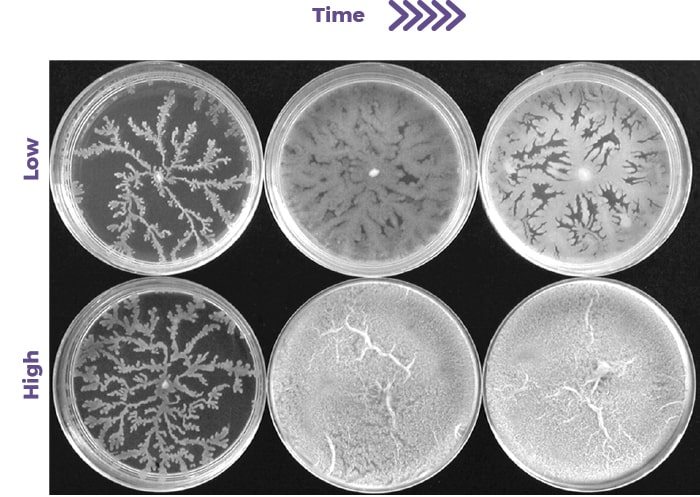
Agriflora Soil


The Microbial Supplement for Enhanced Production & Health
ANALYSIS: RHIZOBACTERIA BACILLUS SUBTILIS 2X109 CFU / G | BACILLUS AMYLOLIQUEFACIENS 2X109 CFU / G
What is It?
- CFIA-registered supplement: Reg. # 2017129A, Fertilizers Act.
- Agriflora Soil is a microbial supplement designed to enhance plant growth and evelopment, nutrients uptake, the overall health, yield and quality.
- Agriflora Soil is formulated with a consortium of two PGPR (Plant Growth Promoting Rhizobacteria) from the genus Bacillus; a naturally-occurring beneficial.
- It’s seed, plant and user safe.
When & Why Use It?
- The product is recommended on all crops including field, horticultural and vegetable crops such as potatoes, soybeans, corn, legumes, brassicas and cereals.
- PGPR Bacillus interacts with crops, resulting in:
- an increase in production of phytohormone such as auxins and gibberellins, which activates growth and development;
- a better root growth and colonization of the rhizosphere;
- an increase in bio-availability of some essential nutrients such as N, K, Fe, Ca and Mg;
- a better solubilization of phosphates;
- a facilitated growth and development in the presence of stress such as high salinity and poor soil.
What to Expect?
- An improved growth and development especially under stress conditions.
- Better nutrients uptake.
- More tolerance to adverse conditions due to weather, pathogens and pests.
- Altogether lead to a preserved yield and quality.
Application Guidelines
- In-furrow: 40-80 ml/ac at seeding with small grains; 400-800 ml/ac for vegetables at planting. Agriflora Soil is compatible mixed with liquid fertilizers (including concentrates).
- Seed Treatment: Apply at a rate of 100ml/100kg of seed. Compatible with microbial inoculants.
- Dry Fertilizer Impregnation: Agriflora Soil can be applied on granular fertilizer through impregnation (3-5 L/metric Ton).
- Can be combined with liquid fertilizers used as starters or through the drip irrigation.
- SHAKE WELL before using the concentrated product.
- Use immediately after dilution. Do not store for later use.
- Store at 2 – 25°C.
- Do not mix with antibiotics, peroxides, quaternary ammonium, hypochlorites or other antibacterial products.
- Results may vary from one site to another.
*Agriflora Soil is a trademark of Abnatura.
Findings



